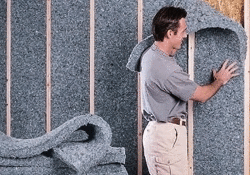BENEFITS SOUNDPROOFING IN INTERIORS IN SCHOOLS

Benefits of Soundproofing in Schools The benefits of soundproofing in schools are given below. In classrooms there are two main acoustic problems. They are excessive noise and excessive reverberation. There will be direct interference with speech due to these two problems which is the element of most importance needed to be preserved in education. Even the whispers of students will magnified several times due to their repeated reflection from the walls because of excessive reverberation. The noise floor of the classroom is increased due to this, and to be heard the teacher would need to raise his/her voice. The voice of the teacher is also subjected to that same reverberation resulting in a significant loss in speech clarity. Since classrooms are not isolated properly it causes excessive noise. Even attempts of instilling discipline among students make noise control difficult. Speech becomes subdued after long duration usually due the combination of reverberation and excessive noise. Benefits of Soundproofing in Schools Using Acoustical Materials For controlling noise the best solution is picking the right location from the beginning. You have to ensure that the location of the classroom is away from noisy generators and electrical machinery. Also, basketball courts, gymnasiums, and car parks inside the school compound are places where classes could be affected by significant noise. If the surrounding noise levels are high it can be resolved through acoustic treatment. When you clap your hands in the middle of the room and if you hear a zinging sound, a flutter echo problem is there. Some absorber panels can be added to target walls (usually the sides). Excessive reverberation will be cut down by this and flutter echo will be eliminated. This noise control method is effective for a room having only hard surfaces. High ceilings in some older classrooms cause very long reverb times lasting more than a second. A suspended ceiling can be added for effective noise control. This absorbs unwanted sounds like student chatter, resulting in noise floor reduction. Unwanted reflections need to be eliminated for efficient noise control. The teacher's voice will be strengthened by some reflections. If the teacher's voice reflects from the ceiling to the rear of the room, overall understandability is improved. For this a small area in the middle of the ceiling must be made of a reflective and hard surface like gypsum board. This design is useful for lecture halls having large spaces not for smaller discussion rooms. For controlling noise between the walls better, sound leakage is prevented by constructing a gypsum board filled with insulation (fiberglass wool or rock wool). For rooms that are very noisy like science laboratories, there may be a need of proper sound isolation for prevention of adjacent rooms from being disturbed. To existing classrooms some of the benefits of soundproofing in schools given above can be used for improving the understandability of speech.